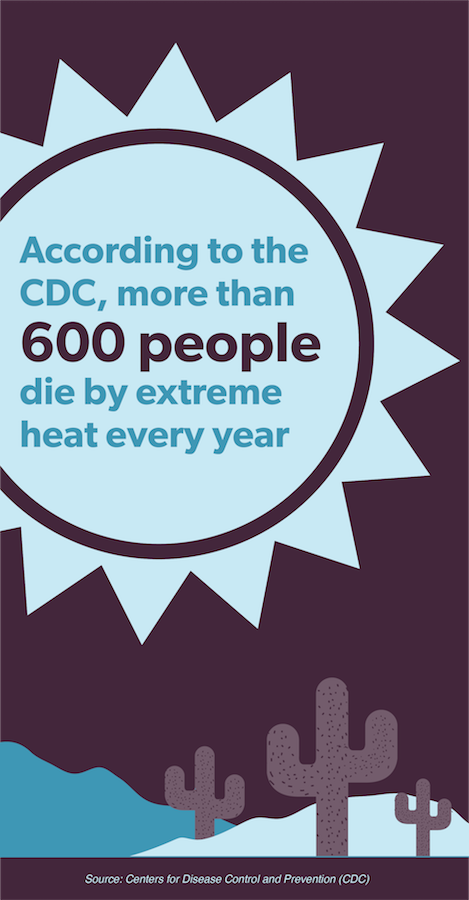Have fun—and stay safe—in the summer sun!
Summer is in full swing and that means the heat is on. Here are important heat-related facts and tips for staying safe this season.
Dangers of heat exposure
According to the CDC, more than 600 people die by extreme heat every year. That’s why it’s important to be aware of heat-related conditions such as:
- Heat stroke: This is the most serious of all heat-related conditions, and occurs when the body is no longer able to regulate its own internal heat. Heat stroke is life threatening, and symptoms include confusion, loss of consciousness and seizures. If someone is suspected of suffering from heat stroke, call 911 right away.
- Heat exhaustion: More mild than heat stroke, but still very serious. Symptoms include headache, dizziness, nausea and extreme sweating and thirst. If you or employees are suffering from these symptoms, get hydrated and into a cool place as quickly as possible.
- Heat cramps: These are cramps cause by the loss of salt in the body through extreme sweating. Cramps can be debilitating, and especially dangerous if an employee’s job requires physical exertion.
- Heat rash: Also known as “prickly skin,” heat rash is caused by excessive and persistent sweating. It is the most common heat-related condition.
Identifying and responding to heat-related conditions on the job
The Occupational Safety and Health Administration (OSHA) provides the following chart to help employers identify heat-related conditions, and know how to respond:
| Condition | Symptoms | First Aid Response |
|---|---|---|
| Heat Stroke |
| Call 911 While waiting for help:
|
| Heat Exhaustion |
|
|
| Heat Cramps |
|
|
| Heat Rash |
|
|
Keeping cool away from work
Heat dangers don’t stop when everyone’s off the clock. Whether you or your employees are having a picnic at the park or doing yard work around the house, here are some helpful reminders:
- Stay hydrated
- Avoid strenuous activities during the hottest part of the day
- Check in with loved ones and neighbors who don’t have air conditioning in their homes
- Apply sunscreen liberally and often
- NEVER leave children or pets alone in a car on a hot day
Stay safe—and have fun!
Don’t let extreme heat stand in the way of a fun summer for you, your employees and their families. Keeping these safety tips top of mind will help you and employees stay safe while also enjoying the summer sun.

